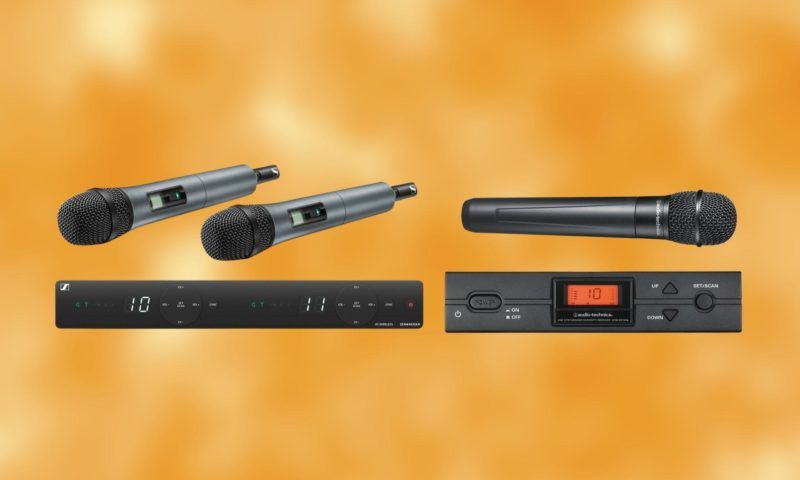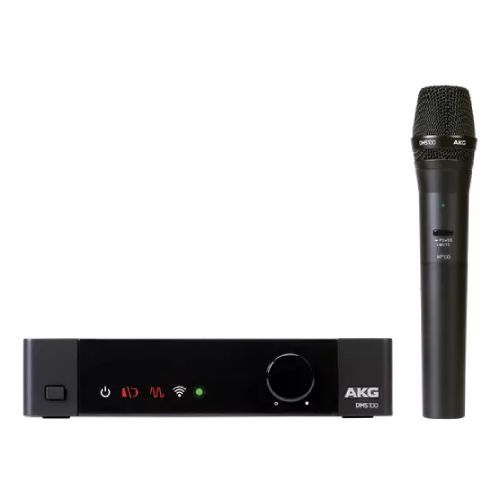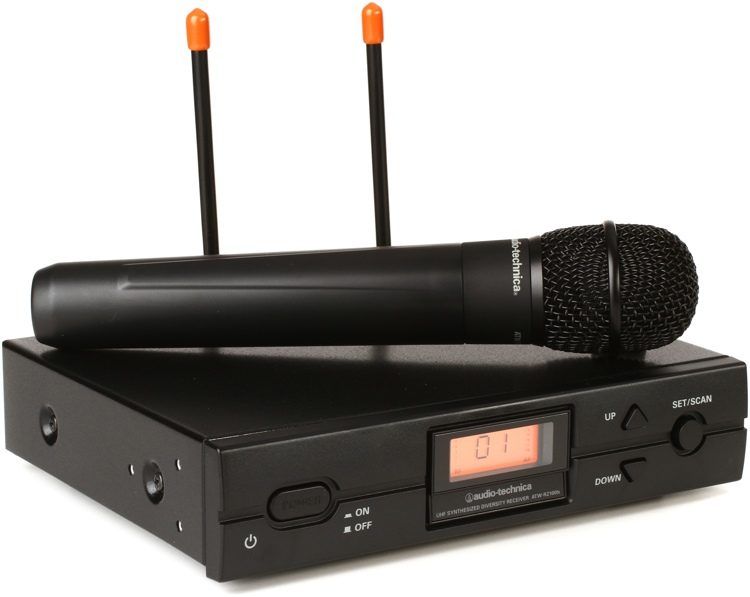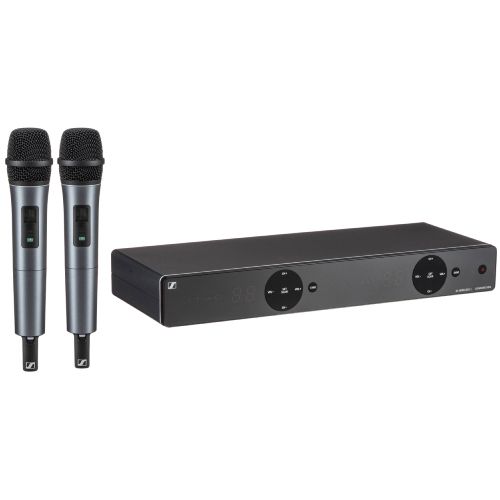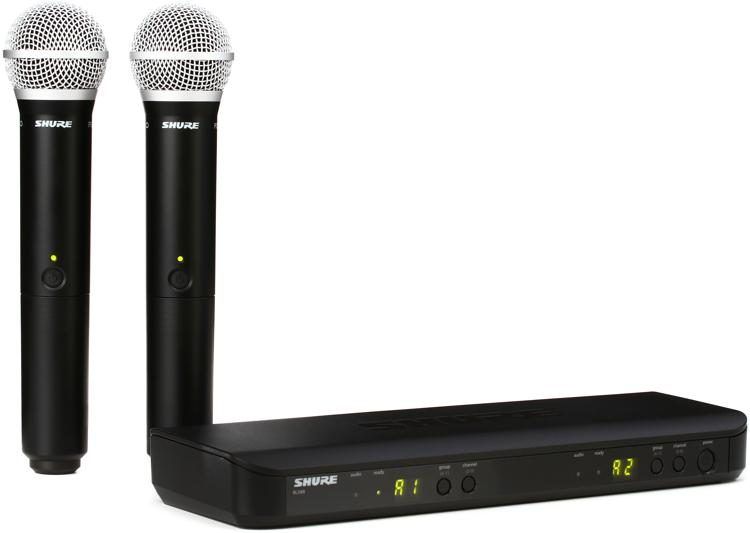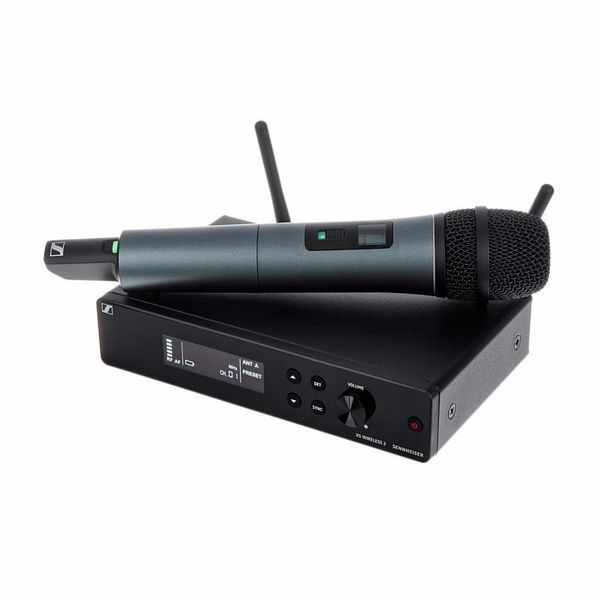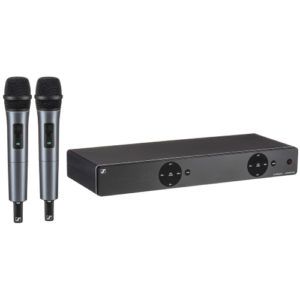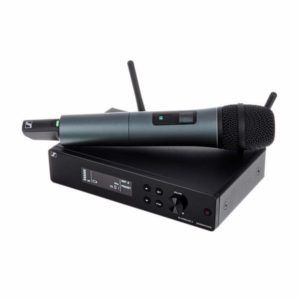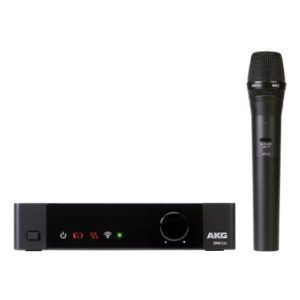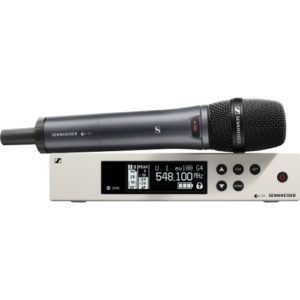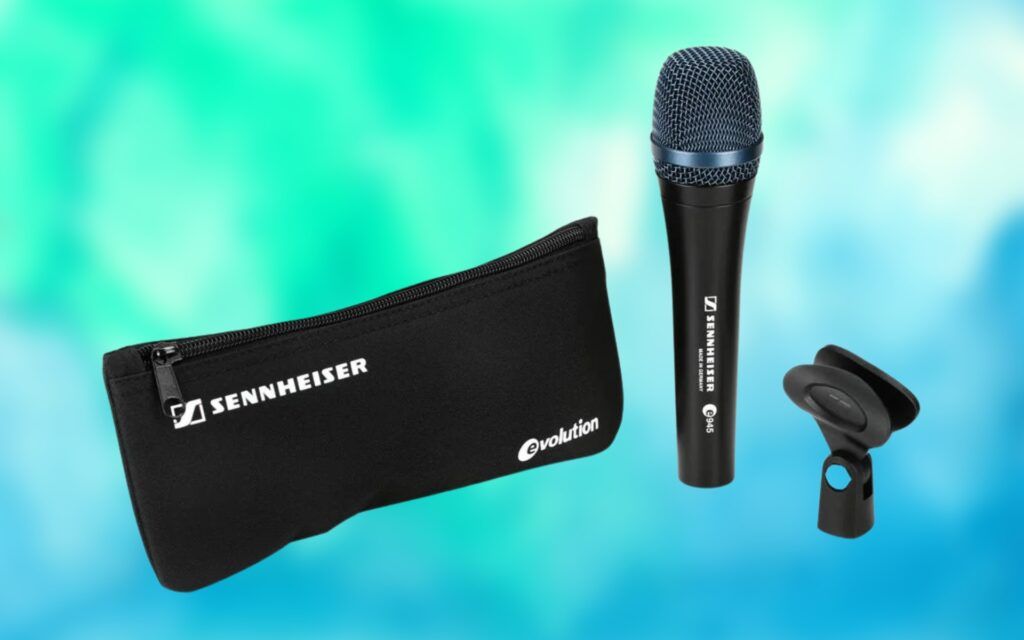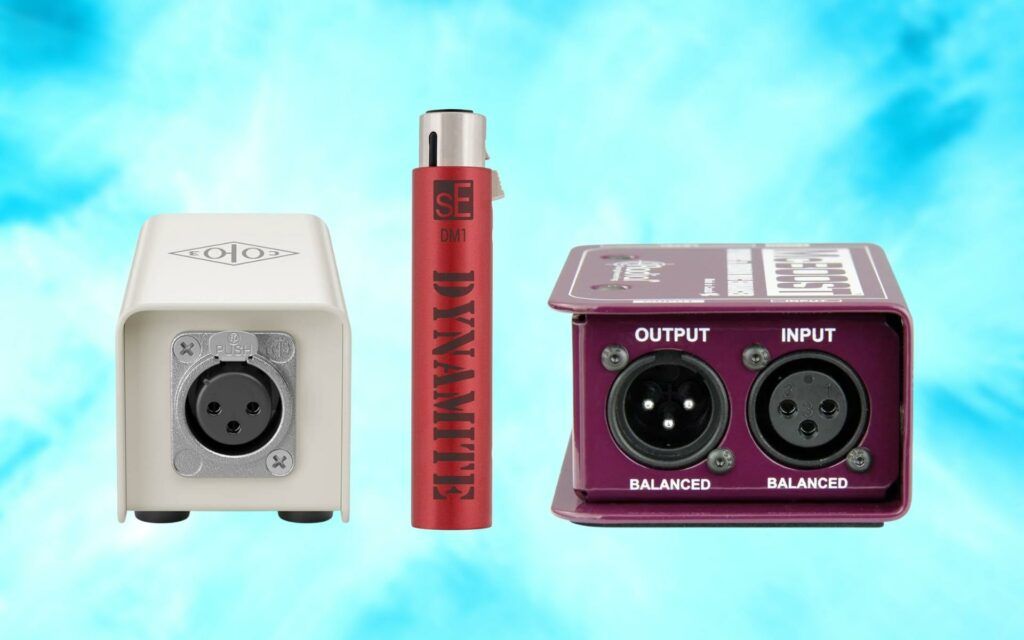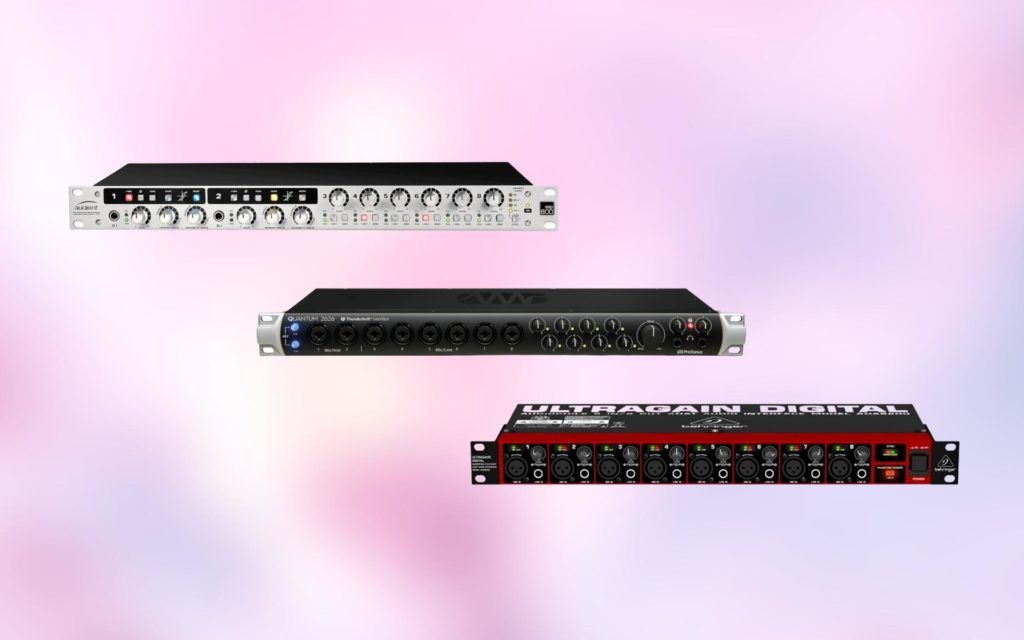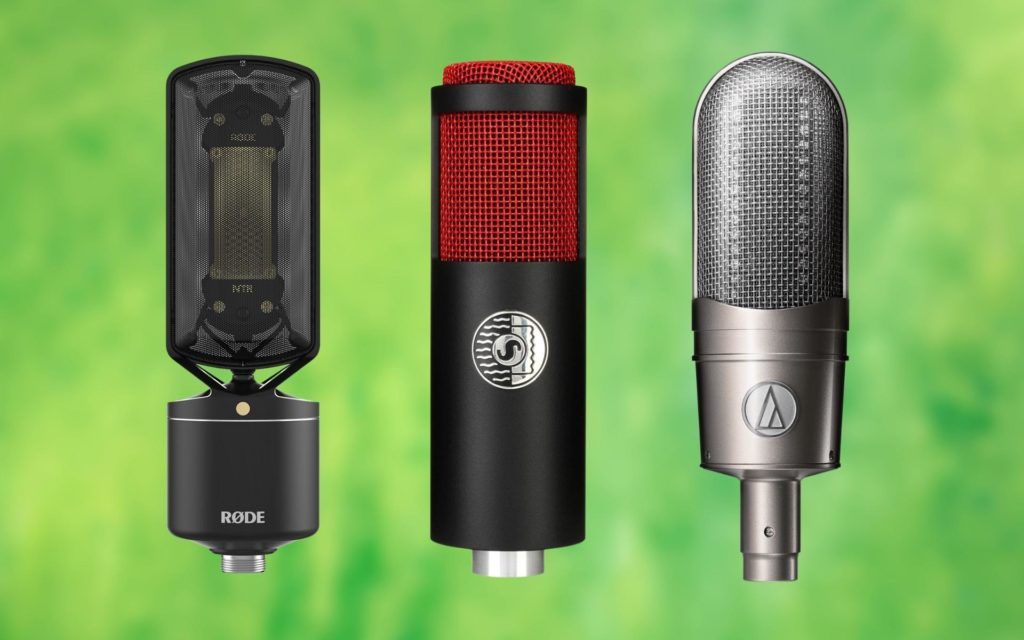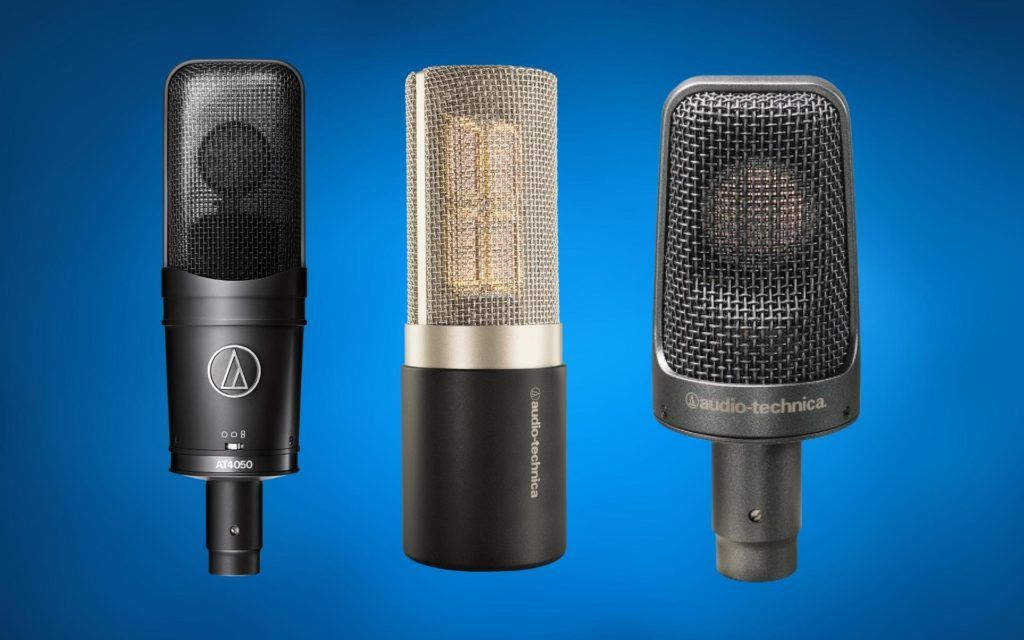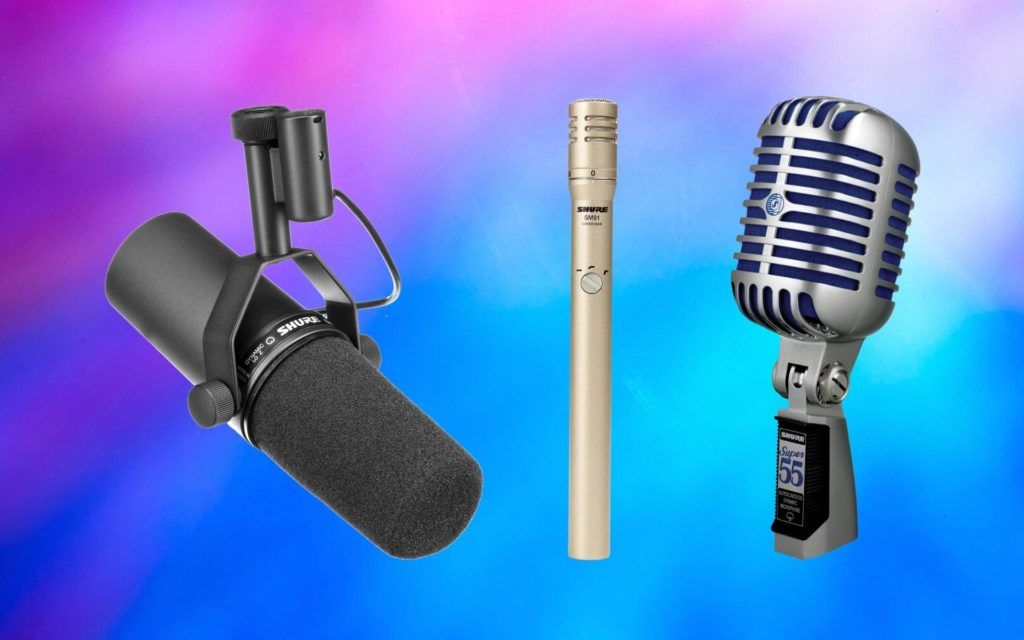We review products independently and our recommendations are genuine. If you purchase through links on our site, we may earn an affiliate commission. Learn More
Wireless microphones allow singers to move around more freely when performing live, making it much easier to engage with the crowd.
A microphone with an XLR cable is fine if it is mainly used on a mic stand, but a wireless mic is the best option if you want to move around while singing.
Moving around onstage as a vocalist can improve your performance in several ways. Engaging with the audience is easier when you can move freely and you don’t have to worry about tripping over cables.
This guide will provide you with a selection of wireless microphones specifically for vocalists looking for excellent sound quality. We’ll also explain what you should look for from a wireless mic to ensure you make the best choice.
In a Rush Roundup
How We Tested
To accurately test these wireless microphones, we began by assessing their clarity across the human voice’s frequency range. Next, we monitored their off-axis rejection and SPL handling capabilities.
As these wireless mics require a transmitter to work properly, we looked closely at the way they interact with these devices. We then tested their build quality to ensure that they will be an excellent long-term investment.
Wireless Microphones for Singers Reviews
Sennheiser XSW 1-835 Dual Wireless Dual Handheld Microphone System- A Range
Sennheiser XSW 1-835 Dual Wireless Dual Handheld Microphone System- A Range Review
Sennheiser is a household name thanks to the brand’s consistently producing high-quality microphones and other audio equipment over several decades. This wireless microphone system is an excellent choice for singers looking for simplicity and efficiency.
One of the most impressive aspects of the Sennheiser XSW 1-835 is how quickly you can set it up. You don’t need an abundance of experience using audio gear because the system does the bulk of the work for you.
The one-button scanning makes it easy to link the mic with the receiver. Also, with two high-quality dynamic microphones included in the system, you’ll always have a spare in case you need an extra mic for a vocal performance.
These microphones have 835 capsules installed, which are amongst Sennheiser’s most highly regarded in the cardioid category. The frequency response is well balanced, so there are no noticeable weaknesses or overly powerful areas.
The XSW 1-835 wireless microphone set also boasts impressive feedback suppression and off-axis rejection. Therefore, you can sing confidently without worrying about noise issues interrupting your flow.
Features:
- Frequency response of 80Hz-16kHz
- Cardioid polar pattern
- 1-button scanning
Pros
- Warm-sounding 835 capsule
- Great feedback rejection
- Very easy to operate
Cons
- The transmitter is not rack-mountable
Audio-Technica ATW-2120b Wireless Handheld Microphone System
Audio-Technica ATW-2120b Wireless Handheld Microphone System Review
The ATW-2120b has a stylish aesthetical design, which is matched by its performance. The handheld wireless microphone system is designed specifically for singers who need to move around performing.
Audio-Technica always seems to deliver when it comes to sound quality, whether it’s with their many headphones or their mics. The included microphone has a cardioid polar pattern, which helps it to focus on your vocals and reject outside noise.
Tonally, you can expect a warm and natural sound. It caters to any singing style, whether you’re a crooner who sings in the lower registers or you prefer to belt out notes in the upper echelons of your vocal range.
The receiver included with this wireless microphone set makes it easy to set the system up. You can also benefit from advanced features, including a transmitter power output that optimizes the operation range depending on your setting.
Furthermore, the microphone also has a 2-stage pop filter fitted onto the capsule. This feature significantly improves the clarity of your live vocals by ensuring that plosives and wind noises don’t get picked up.
Features:
- Cardioid wireless microphone
- 7-9 hours battery life
- Rackmountable wireless receiver
Pros
- Prevents plosives thanks to a 2-stage pop filter
- Rejects feedback and minimizes noise
- Rackmount kit included
Cons
- Limited onboard controls
Shure BLX288/PG58 Dual Channel Wireless Handheld Microphone System - H11 Band
Shure BLX288/PG58 Dual Channel Wireless Handheld Microphone System - H11 Band Review
The benefit to choosing a wireless microphone set that includes two transmitters is that if you ever want to perform a duet with another vocalist, you’re equipped to do so.
Shure has generously included two PG58 mics in this wireless system. These microphones possess the legendary durability that we’ve come to expect from Shure devices, and they also deliver on the sonic front.
Paired with a 2-channel receiver with an LCD and various onboard controls, these wireless mics are ready to use straight out of the box. Simply install the AA batteries in the mics, plug in the receiver, and you’re good to go.
The PG58 has a super-cardioid polar pattern, essentially a more focused version of the more common cardioid pattern. The benefit of this is that you won’t pick up any of the other instruments onstage when you sing into the PG58.
This means there’s no chance of your vocals being drowned out by other sounds, which is essential when singing with a live band or to an instrumental backing track.
Features:
- 50Hz-16kHz frequency response
- Supercardioid polar pattern
- Automatic or manual channel selection
Pros
- Scans for the best open frequency quickly
- PG58 mics have a clear sound
- Extremely roadworthy
Cons
- Slightly lacking in low-end clarity
Sennheiser XSW 2-835 Wireless Handheld Microphone System - A Range
Sennheiser XSW 2-835 Wireless Handheld Microphone System - A Range Review
There are two critical qualities that a wireless microphone for singers must possess to be effective. Firstly, it must have a comprehensive enough frequency response to cover the whole spectrum of a singer’s vocal range, and then, it must be able to handle different volumes.
The XSW 2-835 delivers both of these necessities and more. With a high SPL handling, it can be used for vocal techniques like belting, but it also has the required sensitivity for more laid-back singing styles.
The e835 capsule has a cardioid pickup pattern, which is arguably the best option for wireless vocal mics. This is because it provides enough focus to capture the singer, even if they don’t sing directly into the capsule.
Another impressive attribute of this Sennheiser wireless mic for singers is the extensiveness of the system. You can hook it up to as many as 12 compatible channels using a UHF band, which expands the possibilities considerably.
The microphone is also sweat-resistant, which may be helpful if you often perform in hot venues. You can also set the frequency scanning up automatically, so you don’t need to find the best operating channel manually.
This smooth-sounding wireless microphone is an excellent choice for vocalists of all styles.
Features:
- Cardioid polar pattern
- LCD receiver display
- 10-hour system battery life
Pros
- Simple operation and setup
- Warm, prominent midrange
- Minimizes feedback and noise issues
Cons
- Cannot be rack-mounted
AKG DMS100 Digital Wireless Handheld Microphone System
AKG DMS100 Digital Wireless Handheld Microphone System Review
If you’re looking for a well-rounded wireless microphone system for your vocals, AKG’s DMS100 is worth considering. With a durable build quality and a comprehensive frequency response, this system is reliable.
The limited controls included on the receiver are ideal if you prefer simplicity. You can use the automatic scanning feature to find the perfect available channel to hook the system up to, and this allows you to set up very quickly and start performing or rehearsing.
It’s possible to chain a maximum of four compatible systems together, so if you want to collaborate with other singers in the future, this might be an option worth exploring.
The HT100 microphone in this system is designed to keep latency to a minimum and hone in on your singing voice while rejecting any noise outside the cardioid pickup pattern.
The mic also has a relatively linear frequency response, making it ideal for all styles and tones of vocals. All that is required is a pair of AA batteries, and you can use the mic within an operating range of 30m.
Features:
- HT100 dynamic microphone
- 300ft wireless operating range
- 12 hours system battery life
Pros
- Easy to find the best-suited channel
- Can be used with four additional systems
- Highlights the main frequencies of the human voice
Cons
- Minimalistic controls
Sennheiser EW 100 G4-935-S Wireless Handheld Microphone System - A Band
Sennheiser EW 100 G4-935-S Wireless Handheld Microphone System - A Band Review
If you want to achieve the best sound quality for your live singing performances, this wireless microphone system by Sennheiser is one of the best options available.
With an SKM 100 G4-S handheld microphone, you can benefit from the focused directionality of a super-cardioid polar pattern, which will help to reduce the spill from other instruments and sound sources onstage.
Furthermore, the comprehensive frequency response of this microphone system guarantees that you will be able to utilize your entire vocal range without experiencing any weak spots in the amplification of your singing voice.
Another great thing about this Sennheiser wireless microphone system is that it can be linked to up to twelve additional receivers, which is ideal if you envisage yourself performing as part of a choir or ensemble in the future.
The e935 capsule on the handheld transmitter also boasts an innovative sync function, which instantaneously uses infrared technology to tune it to the EM 100 G4 receiver.
The off-axis rejection of this wireless microphone is perfect for singing, and it also combats handling noise thanks to the robust, sturdy grille and chassis. Finally, the mute switch can instantly kill the sound when you’re not performing.
Features:
- e935 dynamic microphone
- Super cardioid polar pattern
- 330ft operation range
Pros
- Includes a mute switch
- Clear sound for vocal performances
- Can be linked to 12 receivers simultaneously
Cons
- Controls may be complicated at first
Wireless Mics for Singers Buyer's Guide
Wireless microphones are sometimes considered inferior to those that use a cable, but thanks to advancements in their designs, that should no longer be the case. Many manufacturers have invested in this type of mic as more singers require mobility.
Being able to move around freely when performing is essential for many vocalists.
Indeed, there are some who prefer to stay stationary behind a mic stand, but others like to perform energetically to hype up the crowd.
While it is possible to move around to a certain extent when using a wired microphone, you are limited to the length of the XLR cable. Also, there’s the danger that the cable may become tangles or, even worse, cause you to trip over as you move around the stage.
Wireless mics provide a practical solution to these common problems that singers run into when using wired microphones. It’s also important that they provide you with the level of sound quality that you need to sing to the best of your ability.
We’ll discuss this and more in the buyer’s guide below.
Things to Consider When Buying Wireless Mics for Singers
Capsule
Wireless microphones depend on the quality of their capsule to produce clear-sounding vocals in a live situation. Make sure you analyze the type of capsule installed on the mic and check that it suits your style of singing.
Receiver combination
All wireless mics require a receiver to work probably. This device is arguably just as vital as the mic itself. Consider the compatibility of the mic with different receivers and whether the combination works effectively.
Auto scanning
To simplify the process of finding the best available channel for the microphone to connect to, some receivers include auto scanning. This quickly searches for the channel that is available so that you don’t need to do it manually.
Extendability
It’s common for wireless mic systems to be compatible with several other receivers, usually made by the same manufacturer. Extending your wireless vocal system is useful if you intend to sing in an ensemble or choirs.
How To Choose the Right Wireless Microphone for Singing
Wireless microphones come as part of a system, which includes a receiver. The microphone may sometimes be referred to as a “handheld transmitter” in the system, so don’t let this confuse you.
Choosing a wireless microphone is just like choosing any other live microphone – you need to consider the most important attributes.
Other than there is no cable needed, wireless microphones work in the same way that wired ones do. They simply transmit the sound of your singing voice to the receiver so that it can then be played through the P.A system or speakers.
The key thing to keep in mind is that, first and foremost, you should be looking for the mic that sounds the best for vocals.
To determine this, it’s important to look at the microphone’s ability to handle the volume of your singing voice from close range. Then, you should look at the frequency response it covers to ensure that there aren’t any weaknesses.
Once you’ve determined whether the microphone is a good match for the way you like to sing, you can move on to looking at the other important components that are required for this type of mic to work properly.
Basic & Advanced Features
There are several different varieties of wireless microphones available, including:
- Handheld mics with an onboard transmitter
- Lavalier mics with bodypack transmitter
- Headset mics with bodypack transmitter
Handheld microphones with an inbuilt transmitter are by far the most effective for vocalists. They allow you to simply connect the mic to the receiver, find the best-suited channel, and amplify your singing voice.
The way that these wireless microphones work is quite simple, but some of the systems come with advanced controls and features that expand the possibilities you have to work with.
For example, it’s common for wireless microphones to be compatible with a certain number of additional systems. This means that if you’re singing in a group, you can hook your system up to other people’s for convenience.
Automatic scanning is a great feature if you want to set up your wireless microphone quickly, without any hassle.
Some singers may like to manually search for the best possible open channel when connecting their transmitter to the receiver, but this can take up a lot of time that could be spent warming up your voice or soundchecking.
Therefore, I’d recommend looking for a receiver that caters to all of your needs and preferences rather than choosing a system based solely on the mic’s capabilities.
Directionality & Frequency Response
Wireless microphones come with different polar patterns and frequency responses. For live vocals, you want to ensure that the frequency response covers 20Hz to at least 16kHz. If you like to sing high, then you may need to go up to 20kHz.
Cardioid polar patterns are a reliable choice for live vocals, but if you play with a band, you may need even more focus. Supercarioid or hyper-cardioid polar patterns provide this and will reject any sound coming from nearby.
Wireless Mics for Singers FAQs
What Are Lavalier Wireless Mics Used For?
Lavalier wireless microphones are used with a bodypack transmitter, which is attached to an item of the vocalist’s clothing. They’re predominantly used by public speakers or actors onstage rather than singers.
The advantage of these wireless microphones is that they can be clipped onto clothing, and the speaker can talk to a crowd without needing to hold the mic.
Do Wireless Microphones Need Batteries?
Most wireless handheld microphones require at least 2 AA batteries to operate. This will allow them to be used for several hours, which varies depending on the specific design of the microphone.
The receiver is usually used with a power supply rather than with batteries. It’s a good idea to install a fresh set of batteries before each performance so that your wireless handheld microphone doesn’t run flat midway through it being used.
What Is a Bodypack Transmitter Used For?
Bodypack transmitters work in the same way that a handheld transmitter does, but rather than being built into the microphone, they are separate. The performer clips the transmitter onto their belt or another item of clothing.
The transmitter then sends the signal from the microphone to the receiver so that it can then be played through the speakers or the P.A system.

